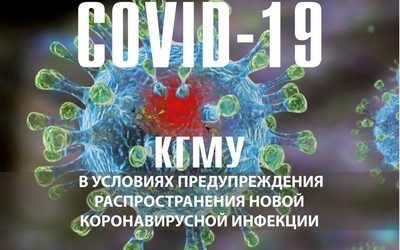Dear colleagues, students, residents, postgraduate students!
On March 11, 2020, WHO announced the start of the novel coronavirus infection pandemic, (SARS-CoV-2). The source of infection is a sick person, including a person in the incubation period of the disease, and an asymptomatic carrier of SARS-CoV-2.
The number of SARS-CoV-2 variants currently exceeds 1,000 different genetic lines. Most of the reported SARS-CoV-2 mutations are not functional. Only individual lines are of pronounced epidemiological importance.
Delta and Omicron variants, which have become widespread, carry mutations in their genome that increase the contagiousness of the virus, mutations that increase the affinity of the S-protein of the virus for ACE-2 and reduce the recognition of viral antigens by post-infectious and post-vaccinal antibodies. The Omicron variant, which carries multiple substitutions in the S-protein of the coronavirus, half of which is located in the receptor-binding domain, has the highest contagiousness among all SARS-CoV-2 variants. High pathogenicity of SARS-CoV, SARS-CoV-2 and MERS-CoV viruses allows to assign them to pathogenicity group II
By the Decree of the Government of the Russian Federation dated January 31, 2020 No. 66, the novel coronavirus infection caused by SARS-CoV-2 is included in the list of diseases that are dangerous for others!
Transmission of the infection is carried out by air-droplet, air-dust and contact-household routes. The leading route of SARS-CoV-2 transmission is airborne, which is implemented when coughing, sneezing and talking at close (less than 2 meters) distance. A contact and home transmission route is possible, which is implemented during handshakes and other types of direct contact with an infected person, as well as through surfaces and objects contaminated with the virus.
In addition, the role of COVID-19 as an infection associated with the provision of medical care has been established. Health-care workers are at the highest risk of infection because they have prolonged aerosol contact in the course of their professional duties. The risk of implementation of airborne, dust and contact-domestic pathways of the pathogen transmission increases in conditions of non-compliance with the requirements of the sanitary and anti-epidemic regime, rules of epidemiological safety, including the use of personal protective equipment. There is a risk of the formation of epidemic foci of COVID-19 in organized staff groups and among the personnel of sheltered institutions in case of non-compliance with infection prevention measures.
To prevent the spread of the Novel Coronavirus infection, we remind you of the need to carry out the following specific and non-specific preventive measures:
− participation in vaccination against COVID-19 (temporary methodological recommendations of the Ministry of Health of the Russian Federation “Procedure for vaccination against the new coronavirus infection (COVID-19, 2022)”);
– promotion of early diagnosis and active detection of infected persons;
– social distancing of 1.5 to 2 meters;
– observance of personal hygiene rules (wash hands with soap, use disposable wipes when sneezing and coughing, touch the face only with clean wipes or washed hands);
– use of personal respiratory protective devices depending on the degree of infection risk (face shield, disposable medical mask, respirator, insulating half-mask, full-face mask);
– carrying out disinfection measures;
– irrigation of the nasal mucosa with isotonic sodium chloride solution;
– use of topical preparations with barrier functions;
– timely visit of a patient to medical organizations in case of ARI symptoms.
Take care of yourself and your loved ones!

